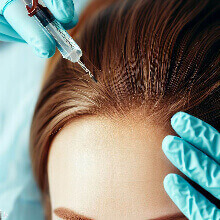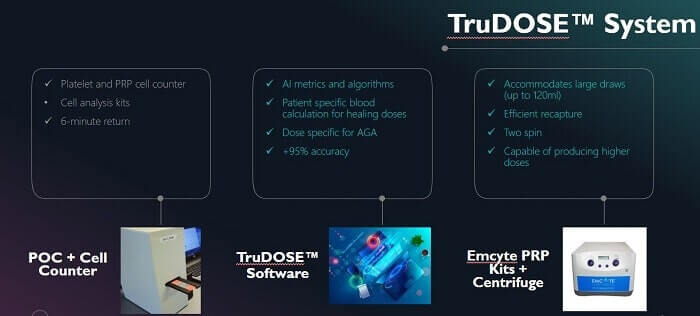
In a recent chat during “The Bald Truth” hair loss show, a regular American participant named “Mike P” posted something very interesting: crazy cheap platelet-rich plasma (PRP) sessions in Mexico.
He travels to the country every four months to undergo this treatment. I discuss the details later in this post.
Please note that I am not encouraging this kind of cosmetic tourism to a lesser developed nation where you can easily run into unforeseen problems. Especially if things go wrong and you need emergency care or want to take a doctor to court for malpractice. You also have to add the cost of transportation and accommodation if you go to a foreign country (although a half-day road trip to Mexico is possible from the US).
However, considering the exorbitant rates that so many doctors in the US charge for PRP, Mike’s strategy has to be discussed. Especially since PRP injections are recommended at least once or twice per year for hair loss sufferers. A major long-term expense. Most US doctors seem to charge between $1,000 to $2,500 per PRP session, but I have seen even higher numbers.
If you are a newer blog visitor, make sure to check out my numerous past posts on PRP and hair loss.
- I used to update the worldwide PRP and hair growth study list at the bottom of this post regularly, but have neglected it in recent years.
- PRP injection treatment variation is a very big problem. You want to make sure that you go an experienced and reputable doctor or surgeon. Usage of the correct centrifuge and correct platelet concentration levels are both of paramount importance.
Low-Cost PRP for Hair Loss in Mexico
Getting back to “Mike”, he goes to Hair Medical Restoration in Tijuana, Mexico (located right across the border from San Diego) every four months. The cost of each PRP sesssion is only $120. Even less if you have had a hair transplant at the same clinic. Mike claims to have seen very good results and considers it worth the time and expense.
This particular clinic also seems to have a second site. I e-mailed them and did not get any response. However, when I called them, they confirmed the price. The lady who answered the phone also had a very good grasp of English and seemed professional.
Hair Medical Restoration’s main hair transplant surgeon is the somewhat well known ISHRS member Dr. Jorge Cortez. He is also listed on the Hair Center Mexico website and on the Capilar Hair Center website.
Note that the PRP injections at Hair Medical Restoration are done by someone other than the surgeon per what I understood from my brief phone conversation.
The Dangers of Getting Cosmetic Surgery in Developing Nations
I have heard way too many scare stories about cosmetic surgeries and procedures gone wrong in Mexico and the lesser developed parts of South America. Just like in other developing nations (e.g., see my post on hair transplant gone wrong).
Having said that, even places in the US such as Miami in 2023 can be unsafe when it comes to cosmetic surgery. Also of note, Hair Medical Restoration’s reviews are extremely good on Google, with an average rating of 4.8 out of 5 stars. And on Yelp, they have 4.1 out of 5 stars.

In all such review sites, you should go through each reviewer’s past history to see if they seem legitimate or fake. Someone who just has one all-time review is very unreliable. At the same time, if someone is leaving bad reviews for many similar types of businesses, it is often a competitor out to demean others.
Ultimately, you are making an educated guess. On sites such as RealSelf, PRP for hair loss reviews are far superior than what we read about in hair loss forums and blogs. Doctors and clinics will obviously only share good before and after results on platforms where they are allowed to do so. And in many cases, they can also get away with fake reviews and photos.
